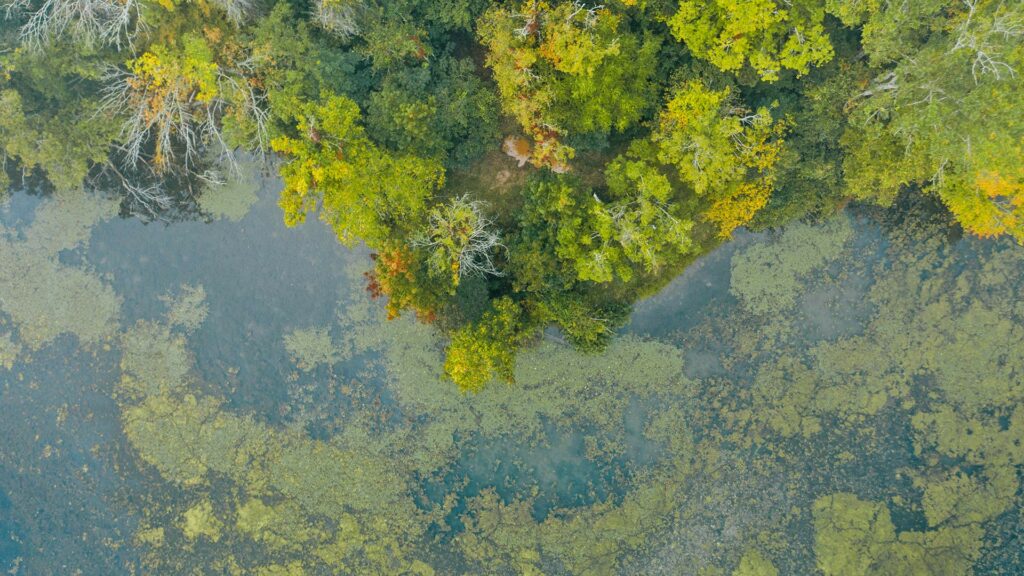Coastal Blue Carbon Monitoring: State of the Art
Explore the latest insights from the ESA Coastal Blue Carbon project
Are you working in coastal management, biodiversity conservation, environmental policy, or working on nature-based climate solutions?
Download the “Requirement Baseline” report from the ESA Coastal Blue Carbon project consortium—a key resource providing the state of the art in coastal blue carbon monitoring. This report was produced to pave the way for the development of tools for monitoring and estimating the carbon stocks sequestered by blue carbone ecosystems.
Why this report is essential
This in-depth report presents the most up-to-date scientific and technical knowledge on coastal blue carbon monitoring. It focuses on the three major blue carbon ecosystems—mangroves, salt marshes, and seagrass meadows—and explores:
Scientific state of the art on coastal blue carbon
A comprehensive literature review and data analysis across all coastal blue carbon ecosystems.
Insight into mapping approaches, ecosystem degradation drivers, and carbon sequestration potential.
Remote sensing and Earth Observation methods
A clear focus on the use of satellite data and remote sensing technologies to monitor and quantify blue carbon
Detailed explanations of satellite sensors, image processing techniques, and methods to estimate biomass and carbon stocks.
User needs and monitoring requirements
A synthesis of expectations and needs expressed by coastal managers, policymakers, researchers, and other stakeholders.
Prioritization of monitoring features such as spatial resolution, accuracy, and types of ecosystem services we can help them track.
Product development priorities
Recommendations for the development of blue carbon products like habitat maps, biomass maps, and carbon stock assessments, based on stakeholder needs, existing policies, and technical feasibility.
Stakeholder engagement and validation
A robust methodology combining expert interviews, user consultations, and in situ data validation.
Foundations for co-creation of monitoring tools and indicators aligned with field realities.
User needs and monitoring requirements
A synthesis of expectations and needs expressed by coastal managers, policymakers, researchers, and other stakeholders.
Prioritization of monitoring features such as spatial resolution, accuracy, and types of ecosystem services to track.
What's inside this report?
- Introduction to coastal blue carbon ecosystems, their role in climate mitigation, and ecosystem functioning
- Overview of global and regional policy frameworks supporting blue carbon conservation
- State-of-the-art methods for estimating and monitoring coastal blue carbon
- Recent scientific publications on Earth observation and blue carbon
- Methodologies for identifying and analyzing end-user needs
- A portfolio of key stakeholders and their monitoring priorities
- A traceability matrix linking scientific findings to policy and user needs
- A detailed overview of study sites and pilot regions
- A full bibliography of the scientific and technical references used
Download the report to:
- Stay up to date on the state of the art in coastal blue carbon monitoring
- Discover innovative remote sensing solutions for monitoring and managing blue carbon ecosystems
- Understand what coastal managers and decision-makers need from blue carbon data
- Learn how the ESA Coastal Blue Carbon project is shaping future monitoring tools
- Join the project by contributing data or testing upcoming solutions

Contribute to the future of coastal blue carbon monitoring
Are you managing a coastal site or working on carbon data? We invite you to contact us if you’re interested in sharing data from your site, testing blue carbon monitoring tools under development or contributing to improved methods for coastal carbon stock estimation.
Help us advance the science and practice of coastal blue carbon monitoring to support climate resilience and ecosystem protection.